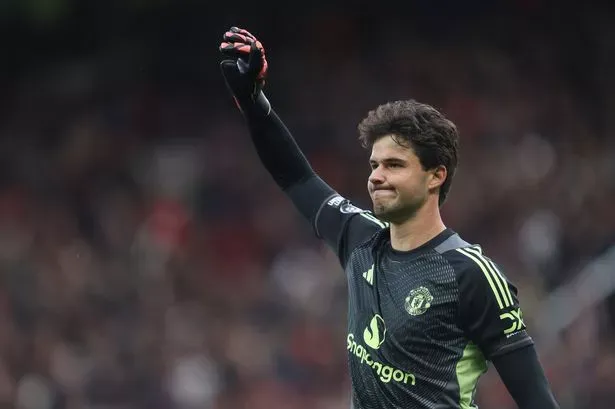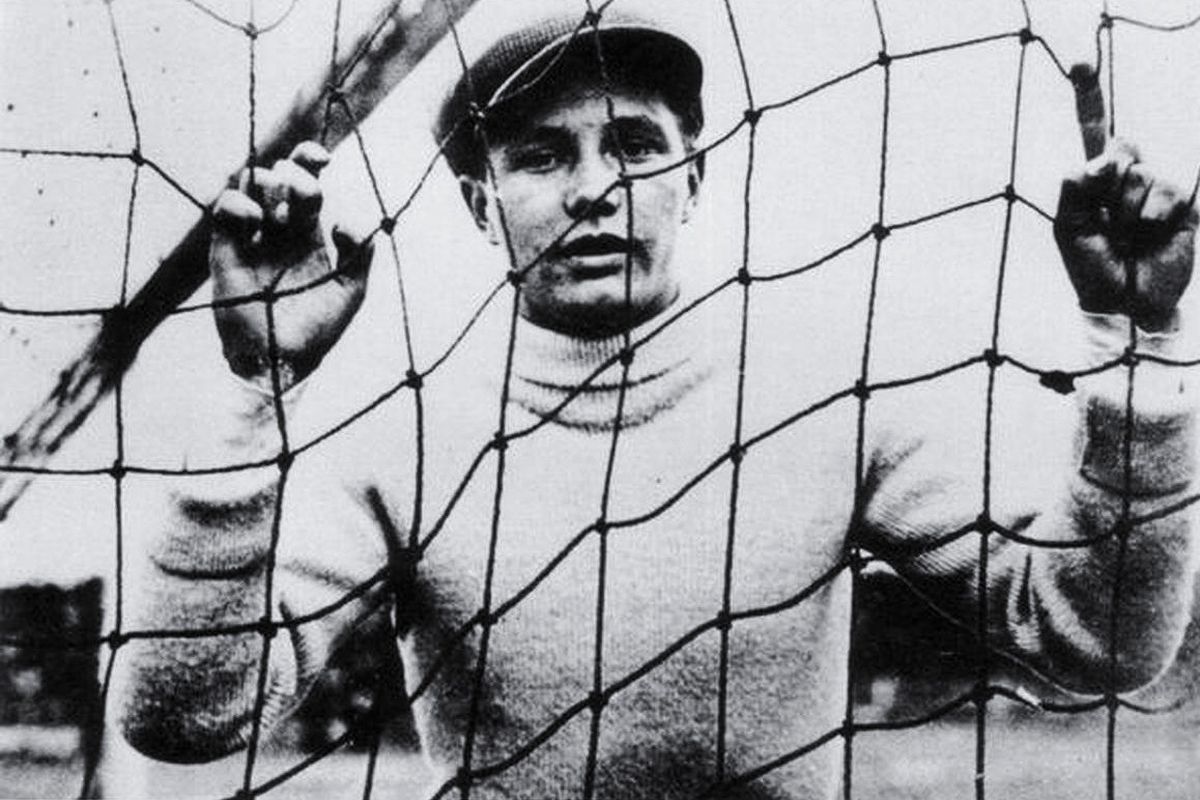Two heads of academy goalkeeping discuss the merits of loans, the academy environment, and the differences in non-league for 16 - 19 year olds.
Header image: via Chelsea FC.
The 2025/26 season is well underway, with academy players between the ages of 16 to 18 across the country facing a crunch period. Two-year scholarships are common across professional clubs in the UK, but given only one goalkeeper can play, the development pathway to allow shot-stoppers a gametime can be complex..
Burnley’s Head of Academy Goalkeeping Ryan Hudson has wide-ranging experience in the game, working his way up from the first-team goalkeeper coach at Mickleover FC to being a part of the coaching departments at Notts County, Nottingham Forest, Reading, Leicester City, Tottenham Hotspur, and Queens Park Rangers. He was given his first Head of Academy Goalkeeping role at QPR in July 2023. After spending just over a year in West London, Hudson started his current role at the Clarets in November 2024.
Often the decision between loan football and academy football isn’t binary, but the experiences intertwine significantly. Speaking about his experience in academy goalkeeper coaching, Hudson believes that the loan market provides valuable opportunities for young shot-stoppers.
“When I was at QPR, we sent a scholar to Step 6, which is the lowest possible level you’re allowed to send loans to from a pro club. He only went for five games just to help them out, but I think just getting them game time is massive, even though, like I said, Step 6 was below his level.
“He was a much better player than that level, but it still created challenges for him like crosses coming in from everywhere and playing against people who were 6’4 - big physical blokes who, probably because they’re not at the same level technically - can make up for it by smashing into the goalkeeper and trying to make it difficult. They’re not as protected as much as they would be in academy football. So, I think it’s good that they get those opportunities.”
Brennan currently works as the Head of Academy Goalkeeping at Rangers, while also holding a part-time role as the Northern Ireland U21 Goalkeeping Coach. The 31-year-old started coaching during his playing career, which saw him feature for a range of full-time and part-time clubs in Scotland and Northern Ireland, including Kilmarnock and Raith Rovers.
He also believes that there are various pros and cons to consider when opting to send young players out on loan.
“Coaches must understand where the goalkeeper is currently at and what the next best step is for his challenge. I think giving players loans too early can kill them. I understand that goalkeepers need to play senior games younger. If you look at the likes of Jordan Pickford, Jack Butland, etc, these guys all went out on loan in the National League at 16, which was great. By the time they’re 20, they can have 200, maybe 300 games.
“It's about timing for me as well. You do not want to put them in an environment that you think is going to make them struggle every single week. Also, picking the right environment is tough. When I’m choosing the environment, I consider who the goalkeeper coach at the club is. Is it a part time loan? Is it a full-time loan? How does that affect his working week and how does that affect you seeing him and helping him when he's out on loan?”
The debate surrounding the value of non-league loans compared to playing for Under-21 teams in development matches is not specific to goalkeeping. Hudson believes that, for young goalkeepers, it is more nuanced given the specific demands of the position. He believes that there is value in both development paths, but the competitive demands of non-league football is something that is hard to replicate.
“I think when you get to non-league, whether it be lower than the National League or into the lower end of the football league, the style of play is very different. They need to potentially take less risk; they need to be able to consistently strike the ball over long distances more often. I’ve had goalkeepers saying to me before, even if you go and play in a Step 3 non-league, people’s mortgage payments are on that. People’s win bonuses might be the difference between someone going out with their family or not. It means more to them.”
The academy system in Scotland is slightly different, with the young goalkeepers at Rangers, who are a mix of part-time and full-time, split into under-17s and under-19s teams. Despite the subtle differences, Brennan believes that lower league loans in Scotland, like in England, provide a unique challenge to young goalkeepers who have grown up in the academy system.
“In terms of comparing academy games to the lower leagues in Scotland, it's very, very different. It’s real life, which you don't get in academy football. You're playing for three points, you're playing for pressure, you've got fans behind the goal. Sometimes it's for managers to keep their jobs, sometimes it's to try and win promotion or stay in the league. So, for a young goalkeeper to be able to experience that with older players, I think it's great.
“Compared to Under-19s football, it's a different style of play - being able to deal with set pieces, being able to deal with contact, which doesn’t happen as much in academy football. We play in the KDM Evolution trophy, which sees us play against first teams in League One and League Two, which is similar to the Vertu Trophy in England. Dealing with contact and dealing with set pieces has been a massive challenge that the lads haven't faced within the academy league programme.”
While he acknowledges the value of both development paths, Hudson believes that every player has different demands, particularly in the 16 to 18 age bracket.
“I think there are definitely benefits to both. It's case-by-case. It depends on the goalkeeper and what that goalkeeper needs. So, for example, we’ve got a goalkeeper at the minute who is a second-year scholar, who’s doing really well in the academy games, but he’s not really been ‘beaten up’ very much, for want of a better term. He’s not been challenged physically very often so he, for now, for me, needs a loan to go and play non-league, to go and play against big blokes and get balls swung in the box and deal with that.
“Whereas you might have a goalkeeper, who you signed from non-league, has come through that system, so he’s better at that, but isn’t as good with his feet, he might need more of the academy system, where he’s playing more intricate passes and playing round and through. So, I think it’s definitely case by case.”
Brennan also emphasises that if a loan is not seen as the best option for a young goalkeeper, creating a clear purpose to training as a backup shot-stopper with the first-team is crucial, so that it benefits them, but also the squad.
“What you don't want to have is a goalkeeper being pigeonholed to where he becomes a training goalkeeper. So, is the programme good enough to see where he's getting his game time rather than in training? I always find that when you're training, you always want something to look forward to at the end of the week and if you find yourself in that third or fourth choice goalkeeper world, where do you find your gaps to get your game time?
“If I look at Rangers or Celtic in Scotland, you're now going to have three games a week because the Europa League's starting up, so it’s really important that you find your gaps to continue to develop your third-choice goalkeeper, your fourth-choice goalkeeper, who may well be needed to travel and supplement the squad.
Development paths don’t have to be limited to development football for the Under-21s or non-league experience, according to Hudson. For first-year scholars, there are other routes to take, especially within their own academy. Hudson said:
“I think, as well, something that needs to be spoken for is playing down an age group, especially for first year scholars. There are opportunities to play up and play down, which I think is big. Giving them games is the most important thing.”
There are clear differences between academy goalkeepers playing in competitions like the Premier League 2, compared to young shot-stoppers gaining experience in the non-league pyramid.
While the technical aspects of the position are prioritised in professional club environments, non-league football exposes young players to the demands of men’s football, which typically places more importance on results over style of play.
Hudson and Brennan believe that the different routes in England and Scotland offer specific demands that can be beneficial to young goalkeepers’ development, depending on their situation. Outlining which route a certain goalkeeper needs to take is a nuanced decision based on a variety of factors that need to be considered by both players and their coaches.









